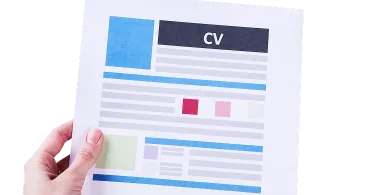Table of contents

The present job market differs dramatically from the labor market just a few years ago. In the past, a resume was needed by upper management and executives, but today it is almost impossible to land an interview for a position without this document.
As Resume Writing Lab reports, many job hunters are aware of the significant role of a well-submitted resume and do not disregard this opportunity to impress prospective hirers.
According to independent studies, HR managers usually spend about six seconds looking at a single resume. But, as we mentioned hereinbefore, the job market is constantly changing and now there is no need for recruiters to waste time and scan tons of resumes. Many companies use special robots and software to choose the most relevant candidates among the hundreds and hundreds of job applications.
There are many types of such software applications – Applicant Tracking Systems (Automated Resume Screeners), resume screening software, resume robots, etc. According to ATS resume writers, it is important to mention that not all recruiters rely on these programs 100%.
But, according to The Wall Street Journal, a lot of large organizations do use tracking systems in order to pre-filter well-prepared resumes. That’s why it’s high time to think about resume improvement services This saves busy hirers time and trouble of getting through far afield and poorly submitted resumes.
It is easy to understand how resume filters work: all the tools and robots score the applications on the relevance to keywords and employment history. But it is necessary to know the way the screener analyzes resumes:
Resumes with low scores, without the exact keywords HR managers are looking for or not optimized for resume screeners have a slight chance to get into human hands. Even if you are a highly qualified candidate with a perfect online presence for job seekers, you risk slipping through the cracks because of unfortunate errors (for example, you did not use a specific language).
If you think that your application is not resumed screener-friendly and want to learn how to make filtering tools like your resume, here are a few simple steps:
A lot of job hunters just copy keywords from the job description and include them in their applications. A word-for-word match may seem a good idea, but not for the recruiters. Your resume can contain those keywords, but also it is necessary to write items, that are relevant to the vacant opening.

There are specific terms in every industry and hirers are more likely to search for specialty items.
There are always priority keywords, such as words that describe a candidate’s skills, expertise, and experience, but use them wisely – do not fill up the resume with the keywords.
The resume should be readable: there are always recruiters who review the applications, so it is necessary to make your resume easy to skim. It is better to stick to standard resume formatting and avoid using fancy fonts. One can apply 10-point Arial, Courier, or Times New Roman font.
To make your resume easier to navigate, use bullets instead of paragraphs, especially if you are going to describe your career. If there are any logos, pictures, symbols, or shadings, you will have to delete them, because all nonstandard elements can choke up tracking systems.
A human being will understand and read a misprint, but a resume screener may simply have no idea what a candidate is talking about. Even if the resume with a spelling error will have the highest score, the recruiter may notice an error and come to the wrong conclusion. That is why it is vital to proofread the document and check it as many times as possible before sending it.
But it is necessary to avoid over-optimization: the first resume will be scanned by filtering software, but later it will be seen by human eyes. That is why it is better to compose a resume with both filtering tools and human readers in mind.